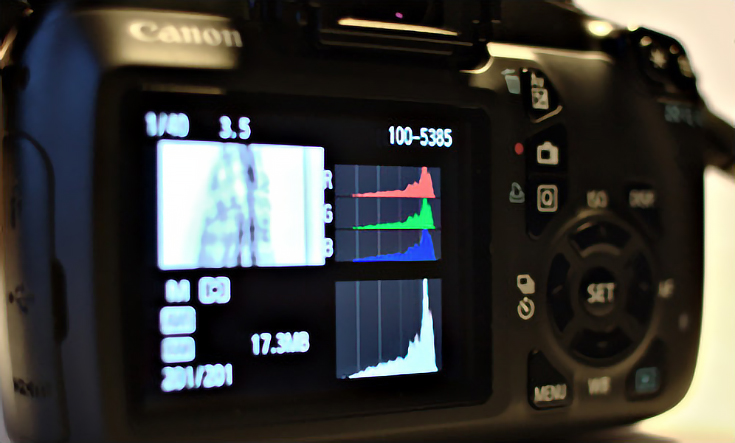Many photographers will snap a photo and then spend the next 15 to 45 seconds scrutinizing the tiny image preview on the back of the camera. That tiny image doesn’t tell them much—it’s too small, often the colors and brightness are inaccurate, and it can be very hard to see anything in bright sunlight—but they look anyway and hope the photo is good enough.
Meanwhile they’ve likely missed 45 seconds’ worth of other photo opportunities.
Obviously, it’s helpful to know if you’ve captured the image that you meant to shoot. However, that thumbnail on the camera’s LCD isn’t up to the job. Instead, it’s often better to simply confirm your exposure by bringing up the histogram, so you can quickly go back to shooting.
When to use the histogram feature
A histogram can be helpful anytime you’re working under tricky lighting conditions and want to double-check your exposure. It’s also faster than trying to judge your final photo based on the small image in your camera’s rear LCD.
Let’s say you have a scene you’re about to shoot. As always, do a bit of careful thinking before properly metering the scene. Then, shoot the photo and bring up your image preview and the histogram feature. It will look something like this:
As you can see, there are several parts to it—typically there will be 5 sections displayed within the histogram.
How to read a histogram
A histogram is a type of graph that measures intensity and value. The graph will change for each photo, so photographers can easily use the histogram feature to make sure their exposure is correct.
I realize it might sound odd to use a graph to help you determine if you’ve got a good photo. But, like any other graph, a histogram is MEANT to use a simple visual to explain complex data—it’s only purpose is to very quickly measure how many bright and dark pixels there are in the photograph.
The histogram displays your photo’s entire tonal range left to right. Black pixels are shown on the very left, and white pixels on the very right. Everything in between covers the range of values between black and white.
Most cameras will actually display several histograms for an image, including a luminance histogram and red, green and blue channels. Quickly appraising these little graphs, lets you make sure your exposure has a full range of shadow and light in it.
What’s a histogram supposed to look like?
Typically you want your photo’s histogram to look like a pyramid, or series of pyramids, rising from nothing on the left to a fairly high peak in the middle, and then tapering away again on the right. This indicates that you have few really dark pixels, lots of pixels in the middle range of brightness, and a few really light pixels.
Basically, it’s showing your shadows, mid-tones, and highlights. A normal photo will have all of those.
Your histogram might also display a skinnier pyramid bunched towards one end of the graph. This isn’t a bad thing as long as you’re taking a photo of something very dark or very bright.
If your histogram is more of a flat graph, with just a spike upward here or there, that indicates that your photograph has very few tonal values (in other words, very little contrast.)
If you’re taking a photo with low contrast (like a snowy field, concrete architectural forms or a black poodle) you can use the histogram to make sure that the “spike” isn’t all the way at the edge of the graph. A spike at the far left side of the histogram indicates that you’ve clipped some of the shadows. If it’s at the far right side, you’ve clipped the highlights.
While it can be okay if your exposure is near the edge of the histogram, if it’s over the edge you’ll lose important details in your picture. Don’t block up the shadows or blow out the highlights—digital is unforgiving if you do.
When it comes to double-checking your exposure, the histogram is very simple and very quick. So why keep using at the stamp-sized preview of your photo on the rear LCD screen? Start using the histogram tool instead. . . You’ll be able to spend more time capturing great images while looking at the world around you, and less time squinting at a tiny screen.
This post may contain affiliate links.

